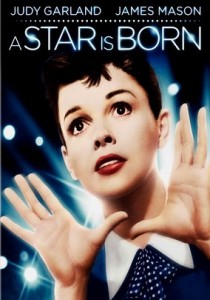Queen Bee-1955
Director Ranald MacDougall
Starring Joan Crawford, Barry Sullivan, Betsy Palmer
Scott’s Review #1,288
Reviewed August 10, 2022
Grade: B+
Queen Bee (1955) is a drama served in a straight-up Southern style. It is highly recommended only for fans of legendary screen actress Joan Crawford. Made during her career’s downward turn, the character is tailor-made for the actress and her fans.
She struts across the silver screen in flashy gowns and heavy makeup, admiring herself in the mirror and firmly ensconced in bitch mode. With matching garish eyebrows and a sassy smirk, she chews up and spits out every character she crosses paths with.
Otherwise, audience members unfamiliar with or otherwise turned off by Crawford should probably avoid Queen Bee. There is little character development or interesting story other than watching her cause havoc.
Set in the 1950s American South, the vicious and conniving Eva Phillips (Crawford) takes pleasure in making the lives of those around her miserable, especially her husband, Avery (Barry Sullivan), who is so depressed he resorts to heavy drinking and becomes an alcoholic.
Meanwhile, when Eva discovers her sister-in-law (Betsy Palmer) intends to wed her former lover Judson (John Ireland), she decides to ruin their engagement for no reason other than being nasty.
Eva’s niece, Jennifer Stewart (Lucy Marlow), arrives in town and moves in with the family. She becomes Eva’s confidante. Everyone warns her not to cross paths with the scheming vixen, but she must learn how deadly Eva is.
At some point early on, Queen Bee turns from high drama into soap opera camp and becomes silly and plot-driven. It’s also melodramatic and stagey, especially once events spin out of control.
Despite a talented supporting cast, Crawford is the headliner. The part is written with her in mind and intended as a comeback vehicle when her career was dusty and needed a dash of drama.
It’s a delight to watch Crawford as Eva, pouring her heart and soul into a role that allows her to be as vicious as she wants. I guess, in some way, you could say Eva’s manipulative motivation is her claim for love, but that’s a stretch and hardly justifies leading one character to suicide.
At the end of the film, Eva gets her due in proper form, which left me—and likely most audiences—clapping with happiness.
Speaking of the supporting cast, I practically squealed with delight at the appearance of Betsy Palmer, forever known to horror audiences as the knife-wielding maniac on Friday the 13th (1980). Jaw-dropping is to see her play a weak, vulnerable character with no bloody ax anywhere in sight.
Barry Sullivan’s performance as Avery is also noteworthy, as is Fay Wray’s small and odd cameo appearance (King Kong, 1933).
Director Ranald MacDougall wrote the screenplay for Mildred Pierce (1945), which won Crawford the Academy Award and was deemed a significant comeback for her. He also wrote Queen Bee clearly with the idea that she would star and perhaps lightning would strike twice.
It didn’t save for two surprising technical Academy Award nominations.
Palmer’s Carol offers the most poignant character summarization of Eva. She tells Jennifer that she once read a book about bees and feels that Eva is like a queen bee who stings all her competitors to death.
Queen Bee (1955) is highly recommended for late-night satisfaction. It immerses the reader in an hour and a half of delightful wickedness from Joan Crawford.
Her scheming Atlanta socialite Eva is towards the top of a list of characters one loves to hate.
Oscar Nominations: Best Cinematography, Best Costume Design, Black-and-White

